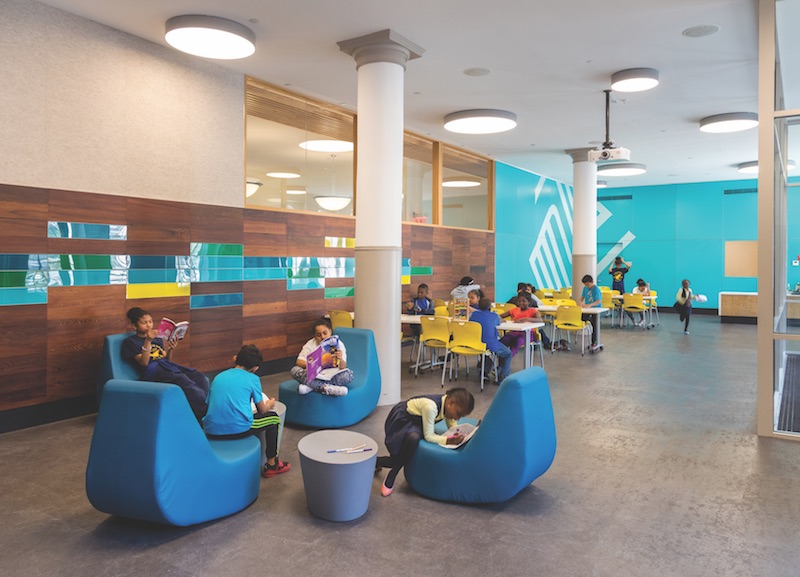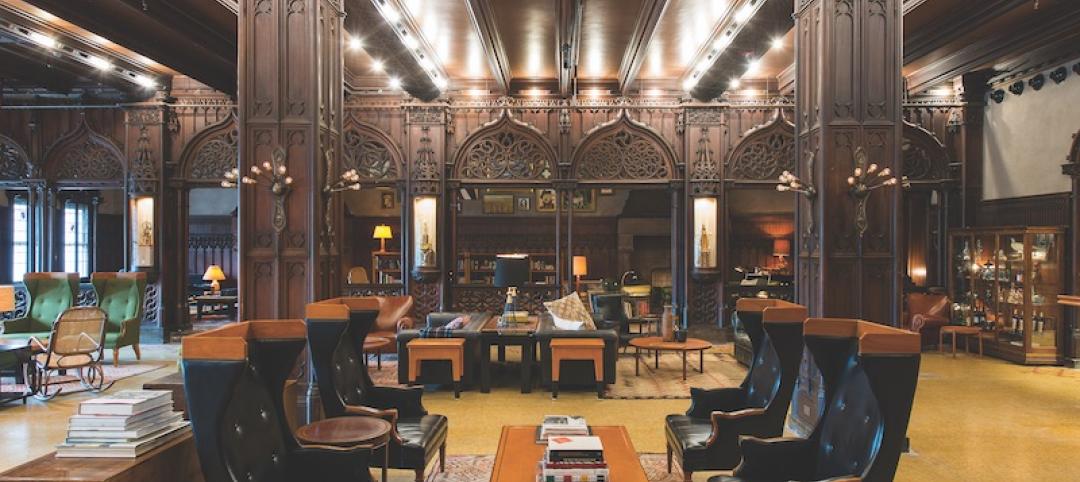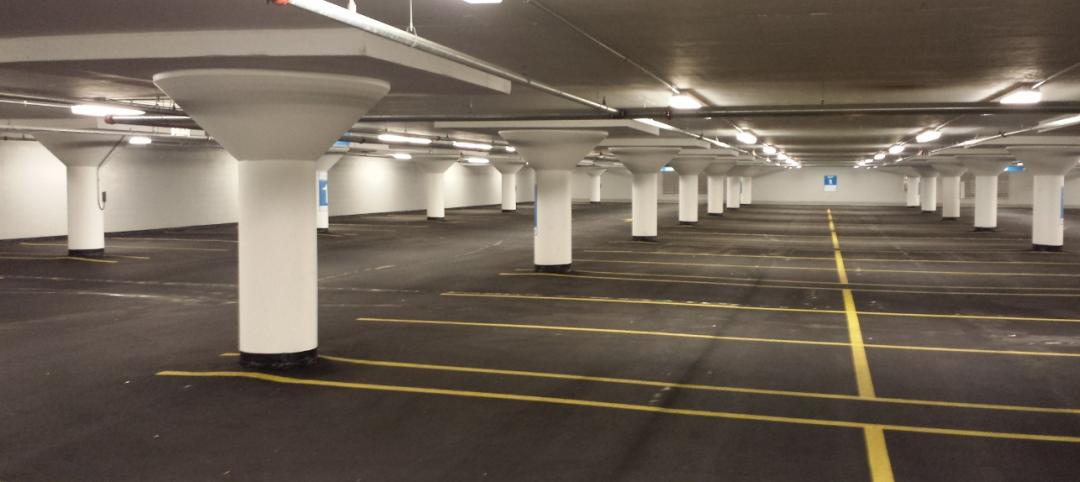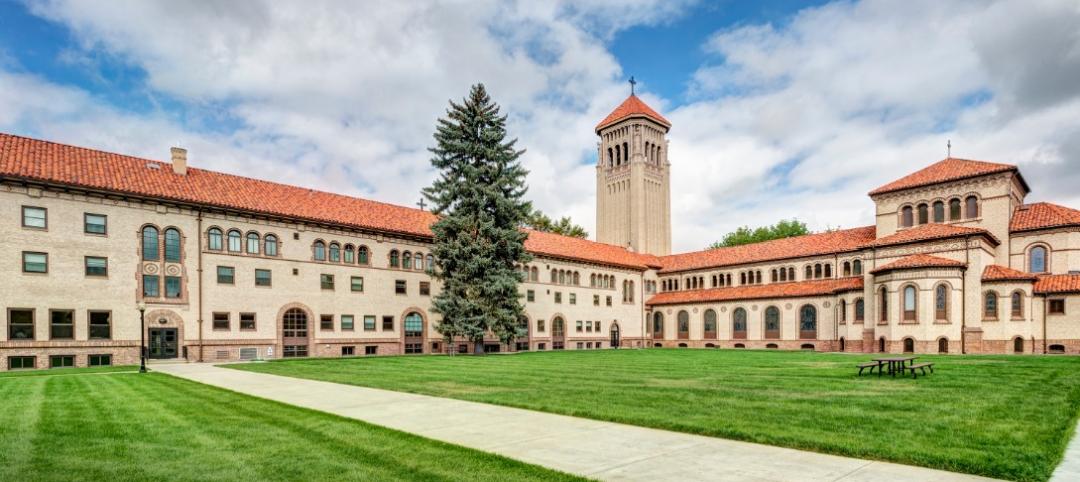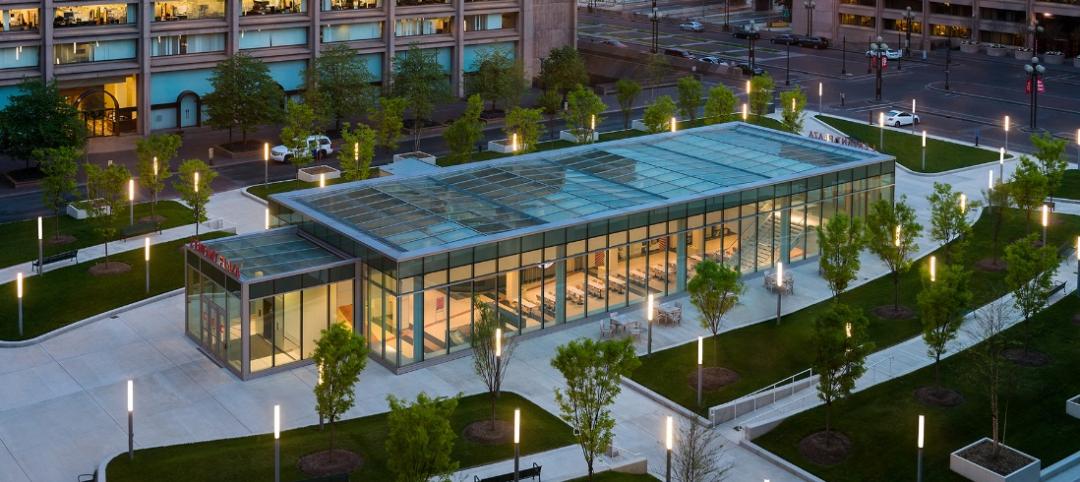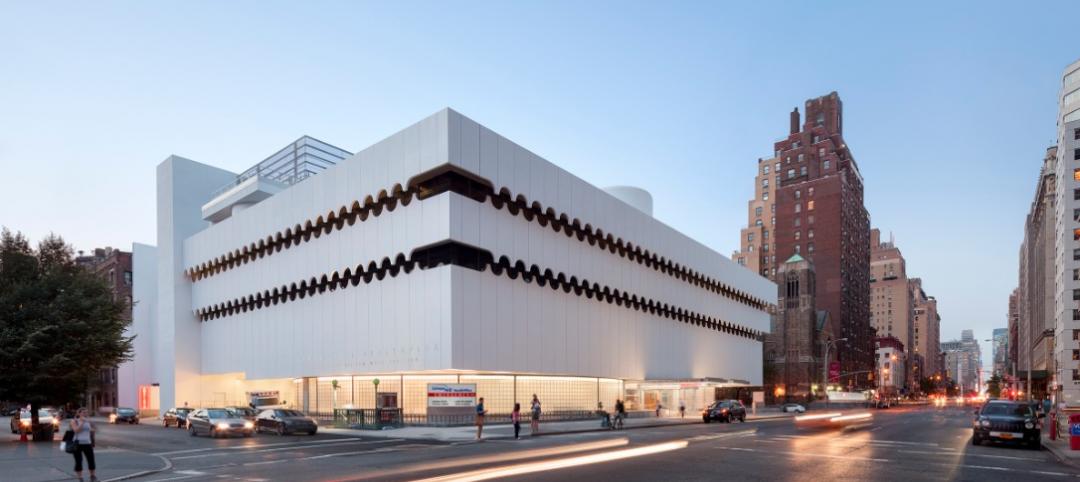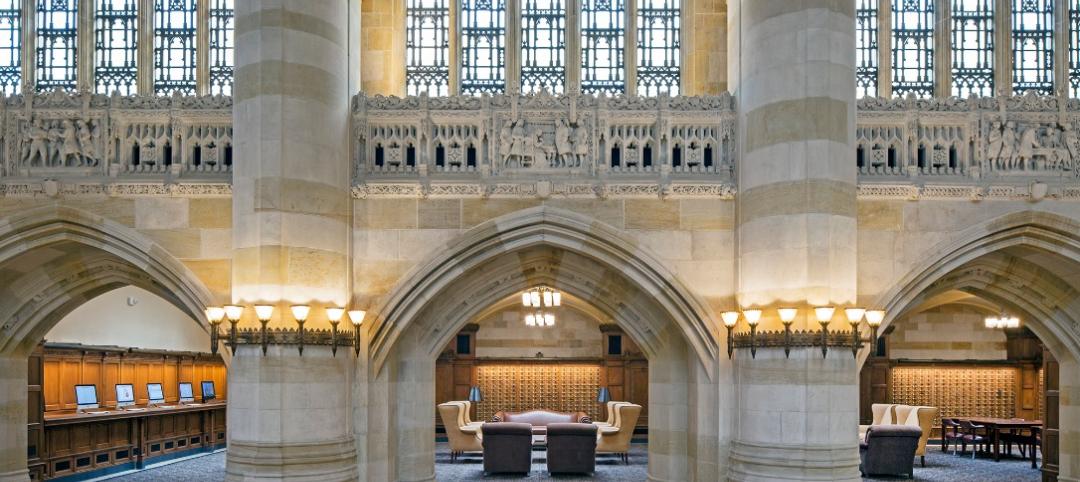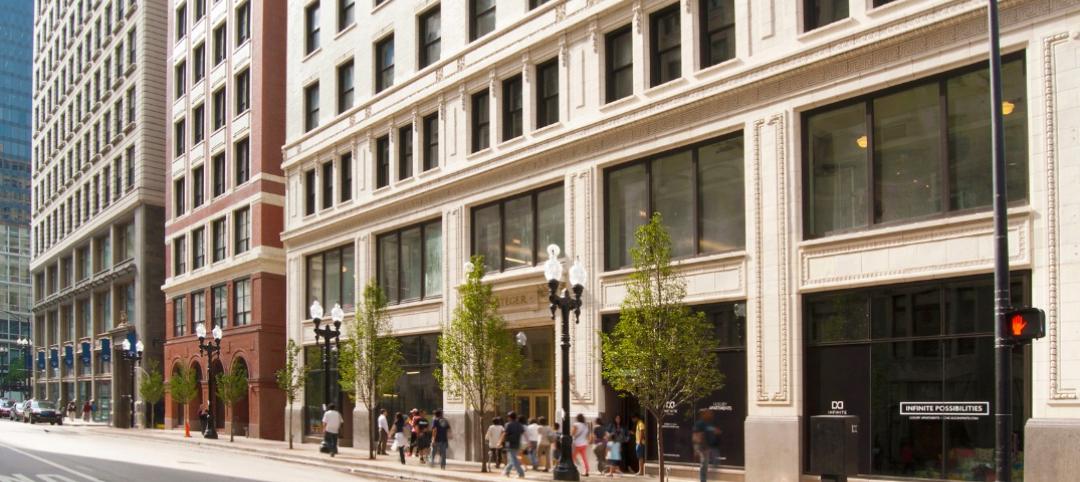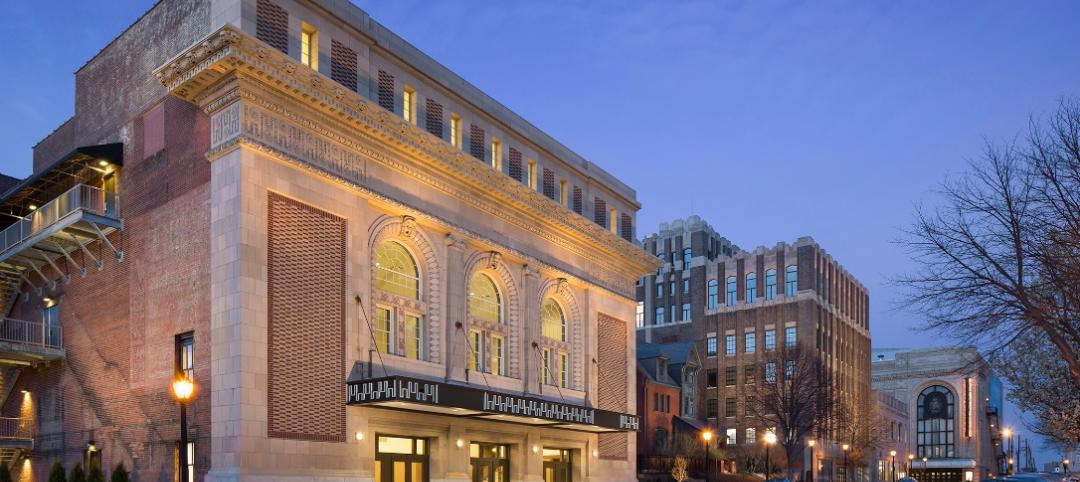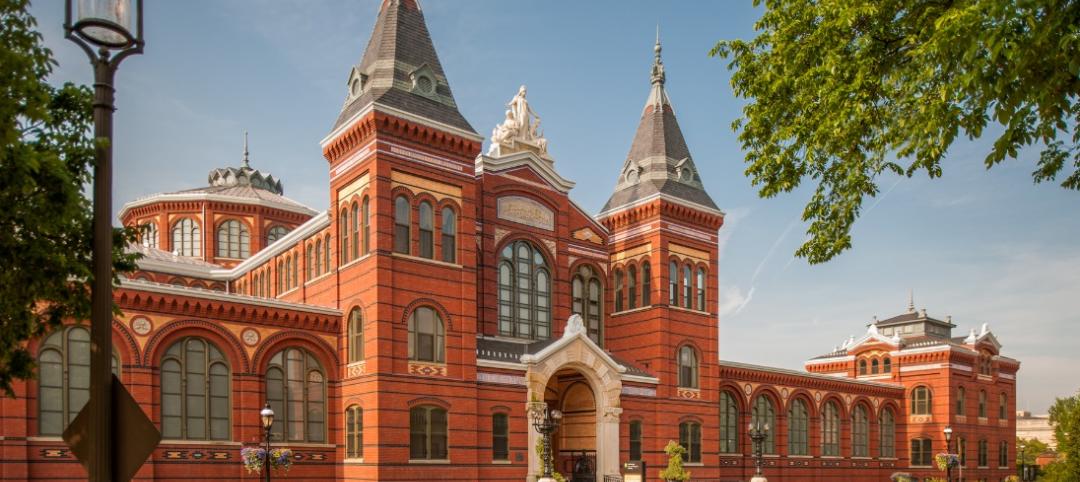The adaptive reuse of PS 186 in West Harlem shows what can be done when imagination and determination come together.
Through the combined efforts of the Boys & Girls Club of Harlem and its development partners, an abandoned public school has been turned into an anchor institution for the Hamilton Heights neighborhood. The adaptive reuse of the 114-year-old school provides two sorely needed services: an 11,300-sf clubhouse with an after-school program and teen center, and 79 units of affordable housing in a neighborhood that is feeling the negative effects of gentrification.
PS 186 was designed by architect Charles B. J. Snyder, Superintendent of School Buildings for the NYC Board of Education from 1891 to 1923. The five-story buff-and-red-brick structure, designed in the Italian Renaissance Revival style, followed Snyder’s signature H-shaped floor plan, which formed open courtyards that brought daylight into the classrooms.
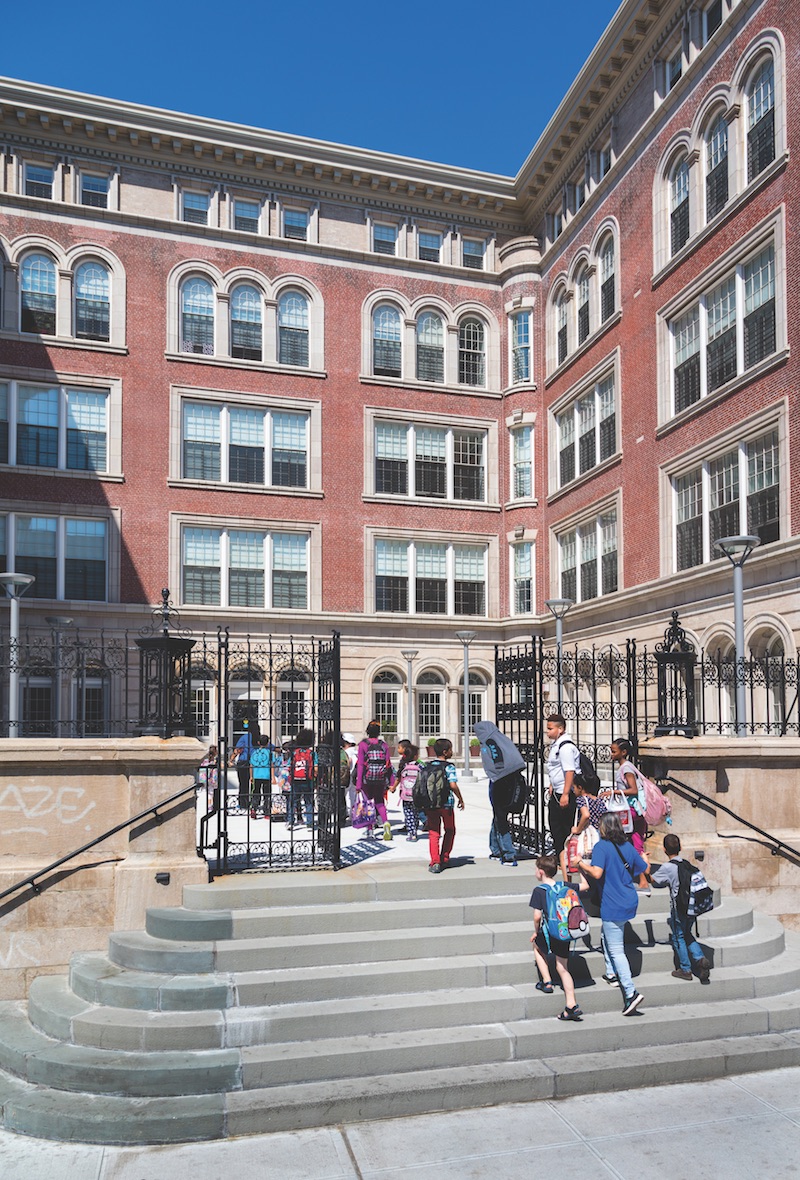 Children enter the Boys & Girls Club of Harlem at the upper courtyard on 145th Street. The decorative metal railings and gates were carefully reconstructed. Another entrance provides an ADA-compliant walkway to the residential quarters.
Children enter the Boys & Girls Club of Harlem at the upper courtyard on 145th Street. The decorative metal railings and gates were carefully reconstructed. Another entrance provides an ADA-compliant walkway to the residential quarters.
Completed in 1903, the school was immediately filled with the children of immigrant families.
PS 186 continued to serve the neighborhood around 145th Street and Amsterdam Avenue for another seven decades, but in 1975 the city declared it unsafe for occupancy, closed it, and transferred the site to the New York County Local Development Corporation. In 1986, the Boys & Girls Club of Harlem (BGCH) bought the property for $215,000.
There it sat for more than two decades. Weeds, even whole trees, clogged the classrooms. Wood floors turned spongy from the damp conditions. Hundreds of pigeon carcasses littered the upper floors. Homeless people squatted amid the ruins. Members of Community Board 9 and the local homeowners association called for the BGCH to take action. Some in the community demanded that the building be razed.
In 2009, the club, in partnership with Alembic Development, proposed a $79 million plan to demolish the school and build a new 200,000-sf home for the group, plus affordable housing, and community and retail space.
Word that PS 186 might be demolished brought out the preservationists, whose letter-writing campaign gained the support of the New York Landmarks Conservancy. But when the community board turned down a bid to have the school declared a landmark, the BGCH claimed that renovating the building without the attendant historic preservation tax breaks was not feasible.
Everything started to change in 2012, as rumors of a plan to reuse PS 186 began to buzz through the streets of West Harlem. In late 2013, Monadnock Construction bought the building from the Boys & Girls Club. Shortly thereafter, Dattner Architects was hired to seek a rezoning for a mixed-use redevelopment with affordable housing and a flagship location for the club. Preservation, once thought impossible, was now the seen as the enlightened path.
What made the deal financially feasible was a conditional approval from the National Park Service stating that PS 186 represented a historically significant example of early 20th-century school architecture. This made it eligible for listing on the National Register of Historic Places and opened the door to what would become about $20 million in historic preservation tax credits.
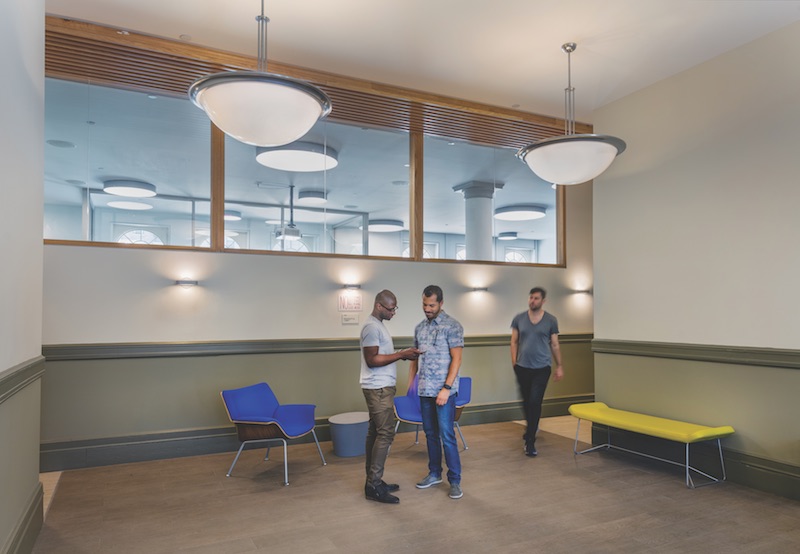 The development provides 79 affordable housing units on its four upper floors: 19 studios, 39 one-bedrooms, 12 two-bedrooms, and nine lofts. Monthly rents range from $508 for a subsidized studio to $2,738 for a market-rate two-bedroom. The 100,520-sf project is participating in the Enterprise Green Communities sustainability program.
The development provides 79 affordable housing units on its four upper floors: 19 studios, 39 one-bedrooms, 12 two-bedrooms, and nine lofts. Monthly rents range from $508 for a subsidized studio to $2,738 for a market-rate two-bedroom. The 100,520-sf project is participating in the Enterprise Green Communities sustainability program.
To comply with the NPS ruling, the reconstruction had to adhere to the Secretary of the Interior’s Standards for Rehabilitation. This meant that the project team had to maintain Snyder’s H-shaped floor plan. Numerous character-defining interior features—ornamental staircases, high ceilings, and a decorative stage known as the principal’s platform—were also preserved.
Key elements of the Italian Renaissance exterior were restored. Based on historic photographs of the original cornice, now damaged beyond repair, the design team worked with a manufacturer to create a support system for a new glass-reinforced cornice. A niche overlooking the historic entry to the school that holds a statue of Minerva, goddess of wisdom and knowledge, also was rejuvenated.
The north and south courtyards were reclaimed. From specimens of existing material, the team reconstructed the decorative iron railings and gates. Stone stairs that had been replaced with concrete block were brought back to their virginal state. An ADA-compliant entry walkway from the street to the residence entry was installed. Two new exit doors were punched out to provide safe egress from the apartment floors (two to five).
Sound attenuation in the residential floors was also addressed. Window units and exterior glass doors were recreated from historic photographs and extant drawings of the school.
Although it took 30 years to complete, the project was applauded by the Reconstruction Awards jury as a shining example of what can be done to bestow new life on the thousands of vacant public schools that face ruin in America’s older cities. Others apparently agree. The project has also won the New York Landmarks Conservancy Lucy G. Moss Award and the Society of American Registered Architects New York Design Award.
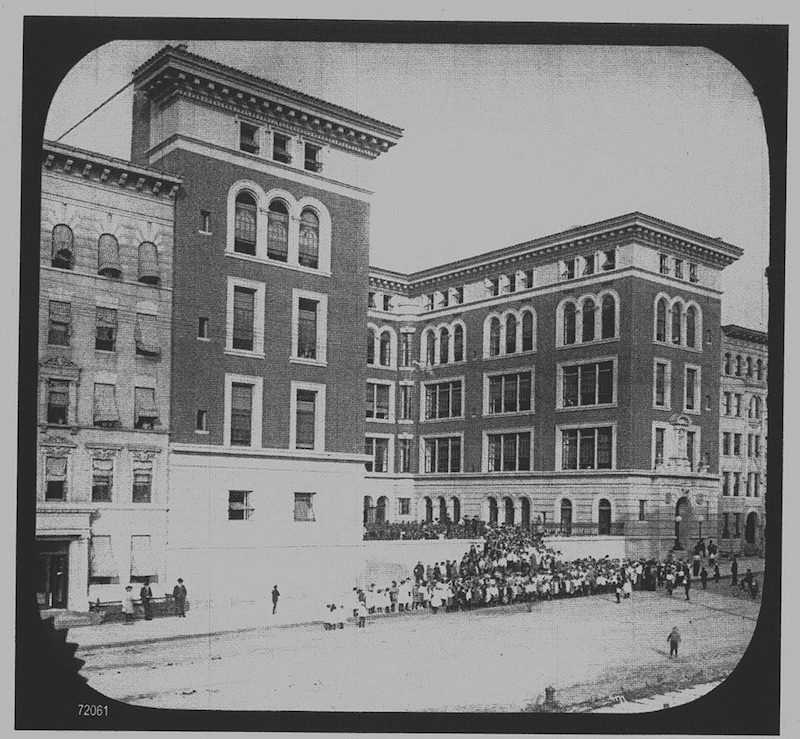 PS 186 opened in 1903 in response to the population explosion in the Hamilton Heights section of Harlem. The school offered adult night classes and became a neighborhood institution but closed in 1975. With its recent renovation, it is back as a community hub.
PS 186 opened in 1903 in response to the population explosion in the Hamilton Heights section of Harlem. The school offered adult night classes and became a neighborhood institution but closed in 1975. With its recent renovation, it is back as a community hub.
Project Sumamry
Platinum Award Winner
Building Team | Dattner Architects (submitting firm, architect, interiors) Boys & Girls Club of Harlem, Alembic Community Development, and Monadnock Development (owners) DeNardis Engineering (SE) Abraham Joselow PC (MEP) Michael A. Tomlan, FAPTI (historic preservation consultant) Construction Specifications, Inc. (specifications) Lumen Architecture (lighting) AKRF (acoustics) JM Zoning (expediting) SWA (sustainability consultant) Jim Harwood Architects (ornamental masonry consultant) Monadnock Construction (GC).
Details | 111,820 sf Total cost $45.4 million. Construction time: March 2012 to October 2016. Delivery method: Design-bid-build.
See all of the 2017 Reconstruction Award winners here
Related Stories
Reconstruction Awards | Nov 11, 2016
Exclusive Chicago club re-emerges as a boutique hotel
Built in 1893 for the World’s Columbian Exposition, the CAA was an exclusive social club founded by leading figures in American sports and commerce.
Reconstruction Awards | Dec 1, 2015
Massive Chicago parking garage gets overdue waterproofing
Millennium Lakeside Garage, the largest underground parking facility in the U.S., hadn’t been waterproofed since the 1970s. The massive project took nearly 2½ years and 33,554 man-hours.
Reconstruction Awards | Nov 30, 2015
Washington Monument restored after 2011 East Coast earthquake
This restoration and repair project, which was completed under budget and eight days early (despite several setbacks), involved re-pointing 2.5 miles of mortar joints, repairing 1,200 linear feet of cracks, and installing 150 sf of Dutchman repairs. Construction took place from November 2011 to May 2014.
Reconstruction Awards | Nov 30, 2015
Denver's 107-year-old seminary campus modernized
The scope of the project included the seminary dorms, library, and chapel, all of which posed their own set of obstacles.
Reconstruction Awards | Nov 24, 2015
Center of I.M. Pei-designed plaza part of Washington redevelopment
The L’Enfant Plaza, a three-story below-grade mall, was renovated to include a new glass atrium pavilion and a 40-foot-long, interactive LED.
Reconstruction Awards | Nov 24, 2015
Manhattan's first freestanding emergency department a result of adaptive reuse
The Lenox Hill Healthplex, a restoration of the Curran O’Toole Building, has glass-block walls and a carefully preserved exterior.
Reconstruction Awards | Nov 19, 2015
Nave restored at Yale’s Sterling Memorial Library
Turner Construction and Helpern Architects revived the 150-foot-long nave, which was embellished with stained glass windows by G. Owen Bonawit, stone carvings by René P. Chambellan, and decorative ironwork by Samuel Yellin.
Reconstruction Awards | Nov 19, 2015
Infinite Chicago redevelopment bridges past to present
The renovation of three historic downtown buildings—the Gibbons and Steger Buildings and Pickwick Stables—includes a multi-level concrete walkway connection.
Reconstruction Awards | Nov 18, 2015
Sun Theater serves the youth of St. Louis
Lawrence Group and property owner TLG Beaux Arts raised $11 million to restore the 26,000-sf theater into a modern performance venue.
Reconstruction Awards | Nov 17, 2015
Smithsonian Institution’s Arts and Industries Building again an exposition and museum space
After removing decades’ worth of unfortunate additions to expose 17 historic interior spaces for the National Historic Landmark, the Building Team zoned in on the client’s key concern.


